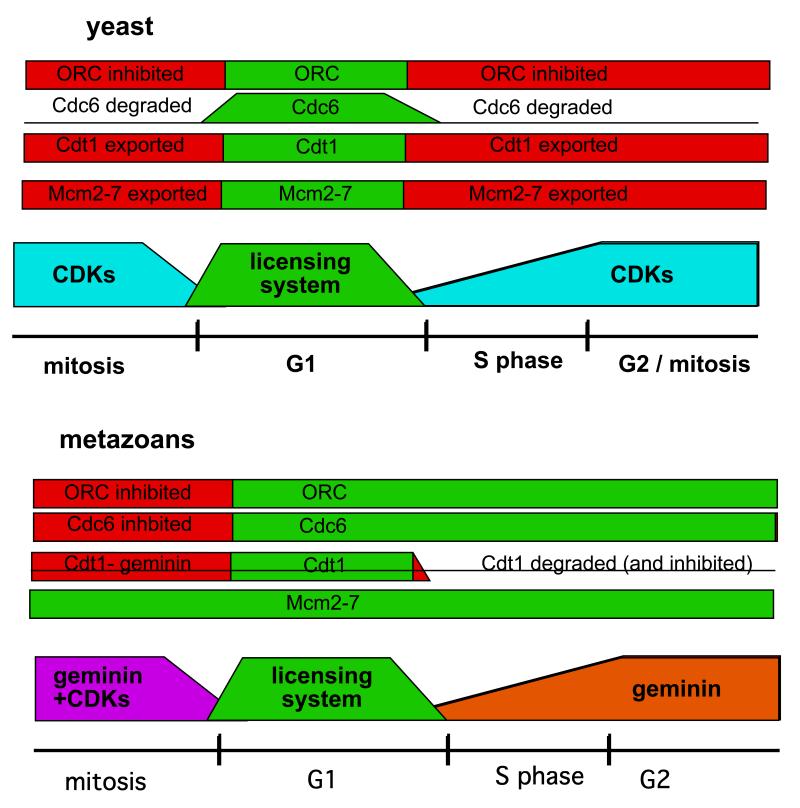Figure 1.
Protein degradation and the cell cycle. Along the bottom are shown the four phases of the cell-division cycle: G1, S (when chromosomal DNA is precisely duplicated), G2 and mitosis (when the duplicated DNA is partitioned into two daughter cells). Cyclin-dependent kinases (CDKs) are activated during late G1 and are inactivated at the end of mitosis. The replication licensing system is only active in late mitosis and G1. The lines above show the relative abundances of cyclin proteins (required for CDK activity) and Cdt1 (essential for replication licensing). Cyclins are destroyed at the end of mitosis (along with the Cdt1 inhibitor geminin) by means of the anaphase-promoting complex (APC/C), a ubiquitin ligase; activation of the APC/C is dependent on CDKs. Zhong et al.1 have now shown that Cdt1 is destroyed at the end of G1, in a manner that is dependent on the activity of the CUL-4 ubiquitin ligase. We speculate that Cdt1 becomes a CUL-4 substrate following phosphorylation by CDKs.

